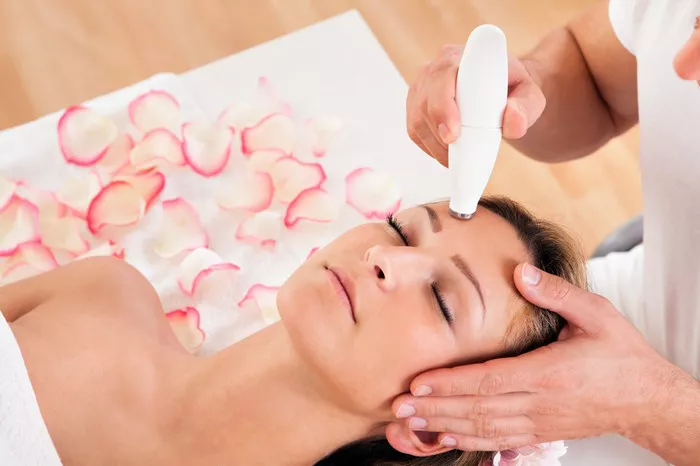Microdermabrasion is a non-invasive cosmetic procedure that involves the use of a special tool to exfoliate the outermost layer of the skin. This procedure helps to remove dead skin cells, unclog pores, and stimulate the production of collagen and elastin. Many individuals wonder if it is safe to do microdermabrasion once a week. In this article, we will explore the benefits and drawbacks of microdermabrasion once a week and what to expect during the procedure.
Understanding Microdermabrasion Once a Week
Microdermabrasion once a week involves undergoing the procedure once a week to maintain the skin’s health and appearance. This frequency of treatment is higher than the recommended frequency of every 2-4 weeks. The goal of microdermabrasion once a week is to achieve a more youthful, radiant complexion by removing dead skin cells and promoting collagen production.
Microdermabrasion once a week is typically recommended for individuals with specific skin concerns, such as acne-prone skin, hyperpigmentation, or fine lines and wrinkles. However, it is important to note that this frequency of treatment may not be suitable for everyone. It is important to consult with a qualified and experienced skincare professional to determine if microdermabrasion once a week is right for your skin type and concerns.
Benefits of Microdermabrasion Once a Week
The benefits of microdermabrasion once a week include:
Improved skin texture: Microdermabrasion once a week can improve the skin’s texture by removing dead skin cells and promoting collagen production.
Reduced appearance of fine lines and wrinkles: Microdermabrasion once a week can reduce the appearance of fine lines and wrinkles by promoting collagen production.
Improved skin tone: Microdermabrasion once a week can improve skin tone by removing dead skin cells and promoting collagen production.
Reduced appearance of acne scars: Microdermabrasion once a week can reduce the appearance of acne scars by promoting collagen production.
Increased product absorption: Microdermabrasion once a week can increase the absorption of skincare products, allowing them to penetrate deeper into the skin and provide better results.
Drawbacks of Microdermabrasion Once a Week
The drawbacks of microdermabrasion once a week include:
Increased risk of skin irritation: Microdermabrasion once a week can increase the risk of skin irritation, especially for those with sensitive skin.
Increased risk of sun damage: Microdermabrasion once a week can increase the risk of sun damage, as the skin is more sensitive to UV rays after the procedure.
Increased cost: Microdermabrasion once a week can be more expensive than undergoing the procedure every 2-4 weeks.
Increased risk of over-exfoliation: Microdermabrasion once a week can increase the risk of over-exfoliation, which can lead to dryness, redness, and irritation.
What to Expect During Microdermabrasion Once a Week
Microdermabrasion once a week is performed in a medical office or spa by a qualified and experienced professional. The procedure typically takes between 30 minutes to an hour, depending on the area being treated.
Before the procedure, the patient’s skin will be cleansed, and a topical numbing cream may be applied to minimize discomfort. During the procedure, the microdermabrasion tool will be directed at the targeted area, and the patient may feel a mild scratching or vibrating sensation. After the procedure, the skin may be red and sensitive, and patients may experience mild discomfort. However, these side effects usually subside within a few hours.
It is important to note that after microdermabrasion once a week, the skin may be more sensitive to sun exposure. It is recommended to apply sunscreen with at least SPF 30 and avoid direct sunlight for at least 24 hours after the procedure.
Who Should Not Do Microdermabrasion Once a Week?
Microdermabrasion once a week may not be suitable for everyone. Individuals with the following conditions should avoid microdermabrasion or consult with a dermatologist before undergoing the procedure:
Active acne: Microdermabrasion can aggravate active acne and cause further irritation and inflammation.
Rosacea: Microdermabrasion can worsen the symptoms of rosacea, including redness and flushing.
Eczema: Microdermabrasion can aggravate eczema and cause further dryness and irritation.
Psoriasis: Microdermabrasion can worsen the symptoms of psoriasis, including redness and flaking.
Sunburn: Microdermabrasion should not be performed on sunburned skin, as it can cause further irritation and damage.
Alternatives to Microdermabrasion Once a Week
If microdermabrasion once a week is not suitable for your skin type or concerns, there are alternative treatments available, including:
Chemical peels: Chemical peels use a chemical solution to exfoliate the skin and promote collagen production.
Laser resurfacing: Laser resurfacing uses laser technology to remove the outermost layer of the skin and promote collagen production.
Microneedling: Microneedling uses a device with tiny needles to create micro-injuries in the skin, stimulating collagen production.
Dermaplaning: Dermaplaning uses a surgical scalpel to remove dead skin cells and peach fuzz from the face, improving skin texture and tone.
Conclusion
Microdermabrasion once a week can be an effective way to maintain the skin’s health and appearance. However, it is important to consider the benefits and drawbacks of undergoing the procedure at this frequency. While microdermabrasion once a week can improve skin texture, reduce the appearance of fine lines and wrinkles, and improve skin tone, it can also increase the risk of skin irritation, sun damage, and over-exfoliation. By understanding the benefits and drawbacks of microdermabrasion once a week and what to expect during the procedure, patients can make an informed decision about whether this frequency of treatment is right for their needs.


